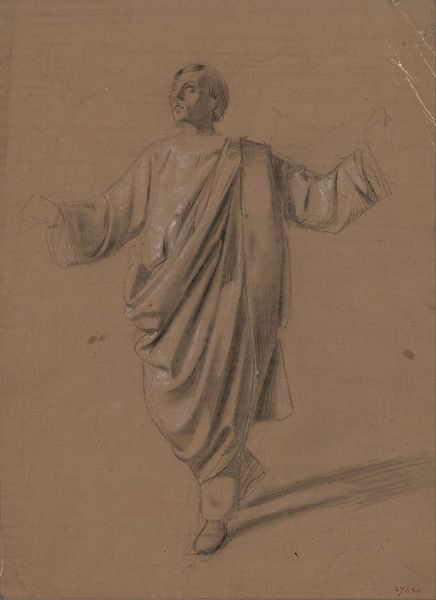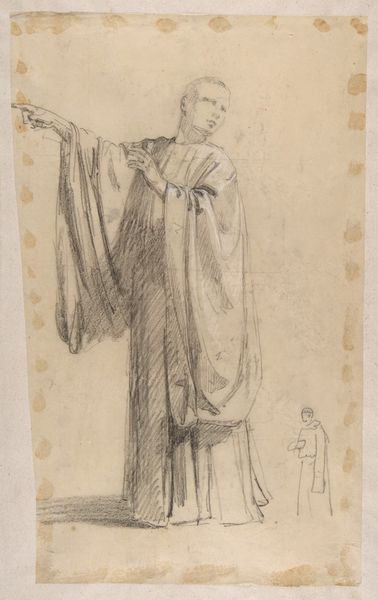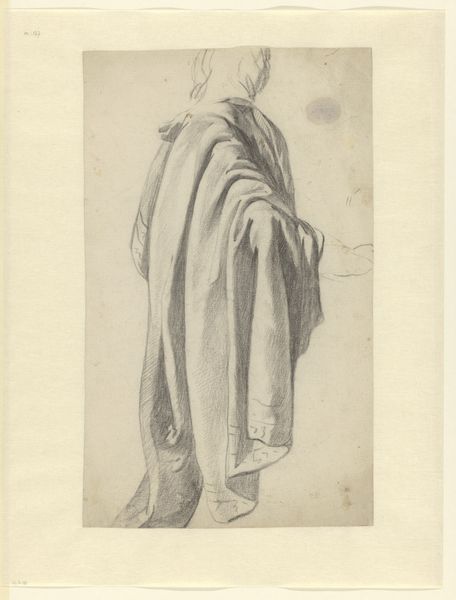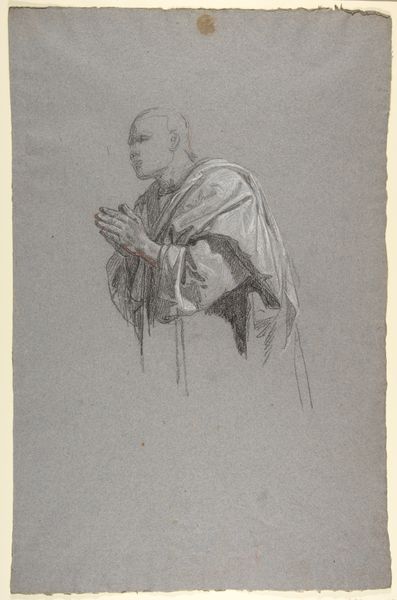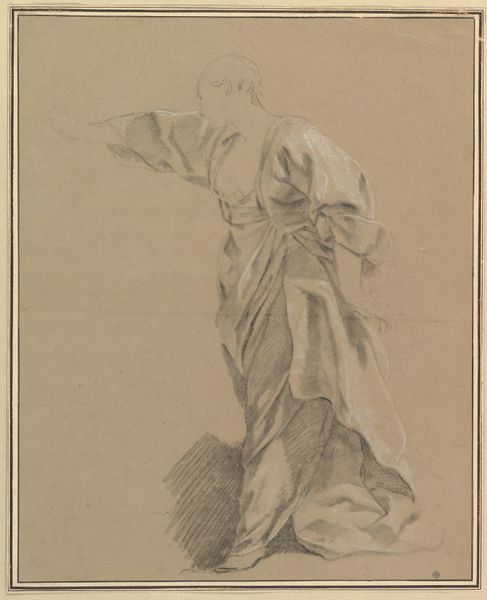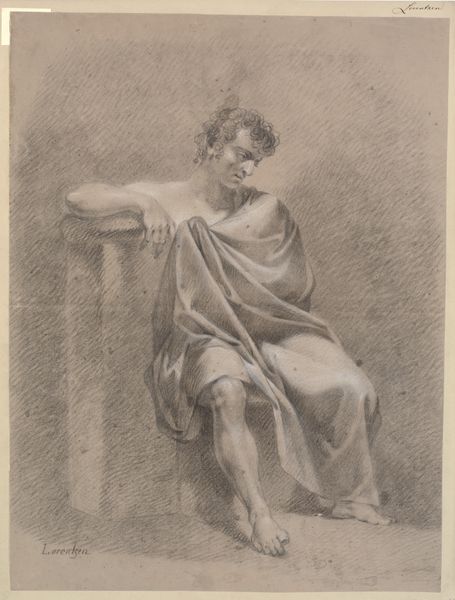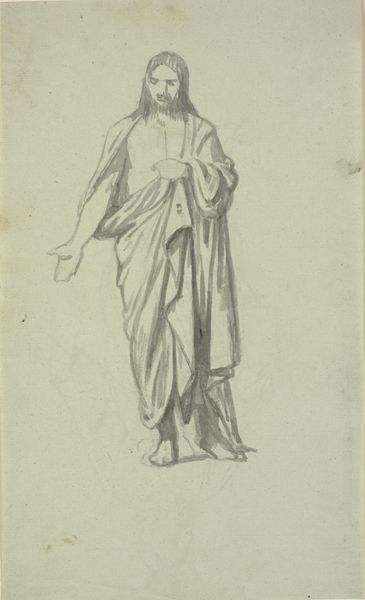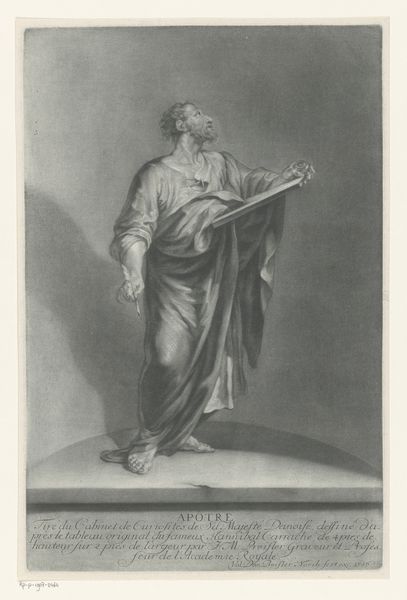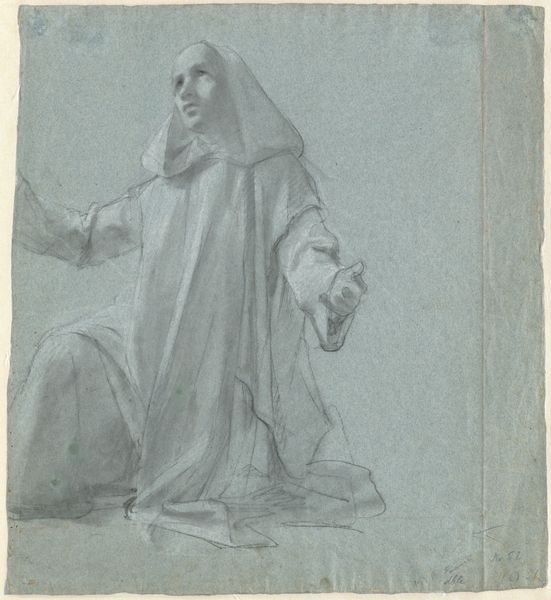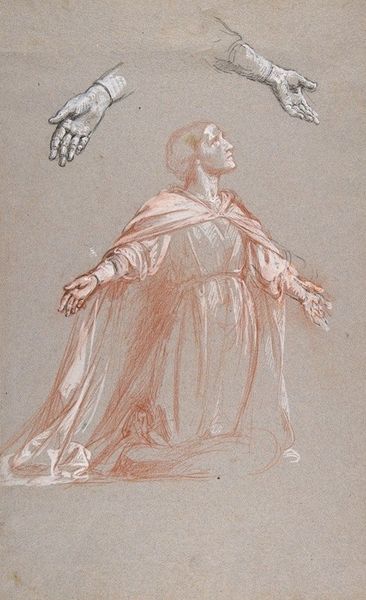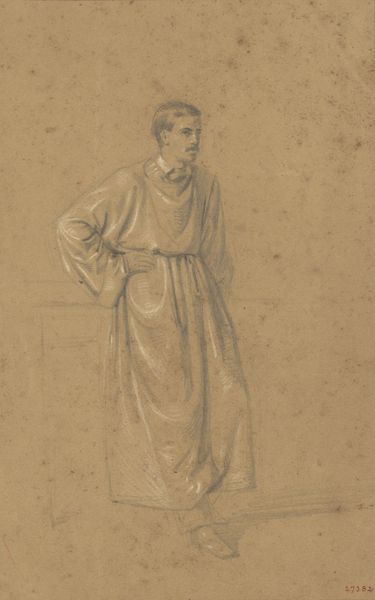
drawing, pencil
#
portrait
#
drawing
#
figuration
#
pencil
#
portrait drawing
#
academic-art
Dimensions: sheet: 43.5 x 40 cm (17 1/8 x 15 3/4 in.)
Copyright: National Gallery of Art: CC0 1.0
Curator: I'm drawn to the subdued serenity of this pencil drawing titled "A Young Benedictine Monk Kneeling," created by Jean Leonard Lugardon after 1824. The paper's cool tone, combined with the monochrome rendering, evokes a sense of introspection. Editor: My immediate response is one of quiet observation. There’s a striking vulnerability in the posture of this figure—kneeling, head upturned, almost beseeching. The context of Benedictine monasticism amplifies this feeling, making me wonder about the artist's intentions in portraying such devotion. Curator: Absolutely. Looking closely at Lugardon's technique, the lines vary significantly. Some are sharp and definitive, outlining the monk's face and hands, while others are soft and sketchy, creating the folds of his habit and adding depth. Note too that we can see an earlier version of the monk next to the dominant drawing, where we can assess his robes and holding a hat and satchel. This attention to material representation, I believe, elevates the work from a simple sketch to a study of textures and form. How the garments drape and fold indicates an interest in rendering cloth and form. Editor: That consideration of materials also draws attention to labor and societal structure. Benedictine monasteries weren't just sites of prayer. They often served as centers of agricultural innovation and scholarship, where labor, spirituality, and community life were intricately interwoven. Consider the labor behind producing even the simple garments worn by the monk. Who spun the yarn? Who wove the fabric? And to consider, what symbolic power is embedded in this depiction of pious servitude, especially in an era marked by rising social tensions and shifts in religious authority? Curator: It is interesting how these economic networks intersect. To understand Lugardon's practice of figuration in this light is also essential, especially since he had been working on frescos. The way he captured human forms here gives an insight to what that process was like. Editor: Precisely. Looking at it this way, it moves beyond a mere religious portrait and engages in wider issues of social power, religious identity, and the performance of faith in a rapidly changing world. Curator: Seeing how these threads connect provides a fresh way to examine what Lugardon accomplished here through modest materials. Editor: Indeed. This piece invites us to reflect on faith and power, not just piety, which encourages a wider historical lens in assessing its value.
Comments
No comments
Be the first to comment and join the conversation on the ultimate creative platform.
